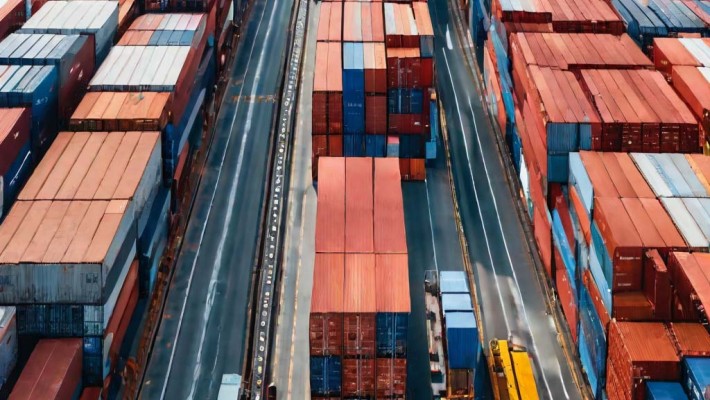Freight Forwarder Insights
Huin International Logistics Latest Articles
Logistics Management of the Belt and Road Initiative
The OBOR currently comprises two land routes: China-Mongolia-Russia and the Khorgos way, also known as the Southern road. These roads are designed to connect inland China with Europe in a more efficient manner. Because of escalating labor costs, factories in Western China had to use Chinese harbors for their relocation due to the higher cost of moving their employees. Chongqing and Zhengzhou are the two biggest centers on the Chinese side. Poland is the destination for customs clearance of rail freight, which follows the same procedure as maritime freight by using a separate custom's document for the entire transportation process. Western Europe's goods are mostly transported through Duisburg, located in Germany.
It is worth mentioning that the majority of the rail network utilized under the OBOR name has been in operation for a considerable period.
The consulates and embassies conduct regular seminars to educate on the progress of their projects (marked in pink on this map), with a particular emphasis on their impact upon the economies of the surrounding country. The Khorgos Gateway and other related projects, as well as those of companies involved, can be relied upon as reliable information sources. There's always the latest information, but you might not be getting the basic understanding.
How do you perceive the impact of OBOR on European companies?
Specifically, the impact is on logistics. The initiative was initiated by HP and the Chinese government, which is why they joined forces. They had to find a different way to transport their short-life products after relocating their entire production to Chongqing. In this area of technology, it is possible to make a sale after two weeks or lose one.
Therefore, our customers can choose from rail freight. Its contribution to the Europe-China freight lines is only marginal, not a replacement for it. Rail freight through Central Asia is about three times faster than maritime freight, and has fewer time and cost variations. The Maritime Silk Road has not brought about much change in the way maritime cargo is transported from China to Europe. Rail freight is a more cost-effective option than air freight, which is typically used for perishable goods like food and has fewer restrictions on dangerous goods. Moreover, this latest railway route permits an equitable timeframe and proper transport of these perishable commodities.
The creation of a more expansive playing field for European businesses is regarded as essentially supplementary benefit. According to Chinese officials, this project has a development aspect that would theoretically result in the creation of 'a market of 4'. Today, there are 68 countries involved and 4 billion customers. The information is still to be nuanced as the majority of these individuals have a low income. This vast market is heavily reliant on the success of development phase in the initiative.
What are the potential hazards associated with the OBOR rail network?
Two of the main concerns raised by our clients are related to quality transportation infrastructure and security.
How do they tackle problems while on the train? The concern is primarily focused on refrigerated goods. According to experience, OBOR officials state that there is a maintenance station available every 8 hours.
A significant concern is the risk of theft, particularly for high-value technological items, as the convoy travels through impoverished areas. By way, one can observe the advancement of Chinese private security companies' services along the road, indicating that this worry is valid. However, it is evident from the reality that this has happened mainly in Europe.
There is a political quandary, as certain railroads traverse nations with unstable relations or domestic instability.
In which sectors is OBOR most advantageous?
It is clear that these industries are retailers of electronics, clothing, short-life products, machines and pharmaceuticals.
Also, most of the traffic moves from China to Europe (90%), passing through the supply chain and then directly to distributors. Companies that supply distributors, like Lidl, must deliver their products promptly, and any delay of one day can result in a fine. The only option was before air freight, which is extremely expensive. A less expensive option is the train today.
China receives a mere 10% of the traffic from Europe. Despite their size, these 10% can be highly captivating. The Dutch powdered milk company serves as an intriguing business case. OBOR roads played a crucial role in China's development during their Joint-Venture. They currently run weekly trains that link the Netherlands and China. The most beneficial products to use in this direction are milk powder, agricultural products, and pharmaceuticals.
Marketing is another benefit we recognize for European companies. In fact, this mode of transportation is both green and socially sustainable. Additionally, due to the political significance of this undertaking, it could potentially attract subsidizes.
Reports frequently indicate the growth of cross-border e-commerce. Despite the small volumes, rail transportation is not included in retail logistics.
What is your perspective on the future of OBOR? How will it shape our future?
Due to the wide range of factors involved, it is challenging to determine whether the project will ultimately meet its intended objectives. We have information we can gather from China which shows no new railway is likely to be built between Europe and china.
Moreover, we observe that it has already reached certain limits today, in terms of volume. The project's end-city connections, which involve 2 trains per week, are causing problems in European hubs.
